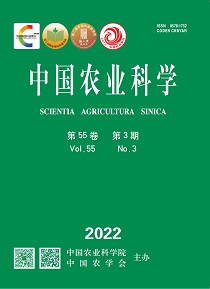【Objective】 The aim of this study was to investigate the epidemiological characteristics of Staphylococcus aureus (S. aureus) in the biofilm producing strains and to explore the correlation between biofilm forming ability and molecular typing, so as to provide the theoretical basis for the treatment of S. aureus infection. 【Method】 The biofilm producing ability of all strains of S. aureus was determined by crystal violet semi-quantitative method. The minimum inhibitory concentrations of 22 common antibiotics were determined by the membrane producing strains. Molecular typing was conducted by three common typing methods of S. aureus, including spa typing, MLST typing and PFGE typing, and the correlation between membrane production capacity and molecular typing was analyzed. Finally, whole genome sequencing technology was used to analyze the antibiotics resistance gene and virulence genes in the biofilm producing strains. 【Result】 The semi-quantitative results of crystalline violet showed that a total of 23 strains (23.47%) of 98 S. aureus strains were able to produce biofilm, including 22 strains (25.29%, 22/87) from cow milk source, 14 strains (60.87%, 14/22) from Zhejiang dairy farms, 8 strains (39.13%, 8/22) from Fujian dairy farms, and 1 strain from pig source (9.10%, 1/11) from Guangdong slaughterhouse, indicating that the film-producing potential of S. aureus from cow's milk source was higher than that of pig source, 22 strains (95.65%) of which were from cow's milk source and 1 strain (4.35%) was from pig source. The film-producing ability was classified into strong, medium and weak, and among the 23 film-producing strains, 2 strains (8.70%, 2/23) were strong film-producing strains, 9 strains (39.13%, 9/23) were medium, and 12 strains (52.17%, 12/23) were weak. The results of the drug sensitivity test showed that the bovine milk-derived membrane- producing strains were sensitive to all the tested antibacterial drugs, while the pig-derived membrane-producing strains showed resistance to 13 antibacterial drugs, including penicillin, amoxicillin, ceftiofur, cefoxitin, enrofloxacin, ciprofloxacin, clindamycin, doxycycline, erythromycin, flupenthixol, cotrimoxazole, tiamulin, and tilmicosin. The spa typing results showed that 98 strains of S. aureus obtained 8 spa types, and 23 strains of film-producing S. aureus accounted for 3 of them: 1 strain t2922 from porcine origin in Guangdong, 14 strains t2119 from Zhejiang cow milk source, and 8 strains t189 from Fujian cow milk source. MLST typing results showed that 98 strains were classified into 9 ST types, of which 6 ST types did not have the ability to produce biofilm, namely ST398, ST522, ST705, ST1651, ST479 and ST151, and only 3 strains of ST type had biofilm production ability, namely ST9, ST7 and ST188. It was found that the molecular types of strong film-producing strains were mainly ST7-t2119, the medium film-producing strains were mainly ST7-t2119 and ST188-t189, and the weak film-producing strains were ST9-t2922, ST7-t2119 and ST188-t189. The ST type of weak film-producing strains could be well distinguished from the medium and strong film-producing strains, and only the specific ST type of S. aureus had the ability to produce biofilm. 23 film-producing strains PFGE typing all successful PFGE typing results showed that the results show that each strain of film-producing bacteria in Guangdong, Fujian and Zhejiang provinces were divided into 3 PFGE types, and there were geographical distribution characteristics of PFGE types; the strains isolating from the same region had clonal transmission, and the strains in the province were clonal to each other, but there were significant differences in biofilm production ability between clones.; the whole genome sequencing results showed that the drug resistance genes and virulence genes in the film-producing strains were diverse according to the molecular type. 【Conclusion】 S. aureus from different sources had different potential to produce biofilm and all carried different film-producing genes. The film-producing potential of S. aureus from bovine milk source was much higher than that of porcine source, and all carrid different film-producing genes. Whether strains could produce film or not may be strongly correlated with ST type, and the specific ST types, such as ST9, ST7 and ST188, were more likely to produce biofilm; however, at the same time, the strains with the same molecular type had different abilities to produce biofilm.









